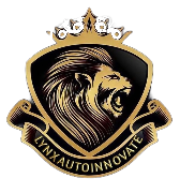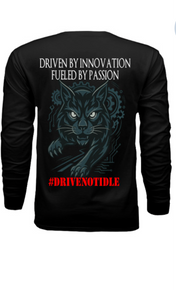Your car’s suspension and steering systems are what connect you to the road. They don’t just make your drive comfortable — they keep your tires firmly planted, absorb road imperfections, and ensure you stay in control when turning, braking, or accelerating. A perfectly tuned suspension and steering setup means your car glides smoothly, corners confidently, and responds precisely to every movement of the wheel. Let’s break down how these systems work, their types, and what to watch for...
1. How the Suspension System Works
The suspension system is designed to:
- Absorb shocks from the road.
- Maintain tire contact for traction and handling.
- Support the vehicle’s weight and keep it stable.
It does this through a combination of springs, dampers (shocks/struts), and linkages that work together to smooth out bumps and maintain control.
2. Major Suspension Components
Springs: Support the vehicle’s weight and absorb energy from road impacts. (Can be coil, leaf, air, or torsion bars.)
Shock Absorbers: Control spring movement, preventing bouncing and instability.
Struts: Combine a shock absorber and structural support — common in front suspensions.
Control Arms: Connect the wheel assembly to the vehicle frame, allowing vertical movement.
Ball Joints & Bushings: Allow flexible, smooth movement between parts while reducing friction.
Sway Bar (Stabilizer Bar): Reduces body roll during turns by balancing suspension movement.
3. Types of Suspension Systems
Independent Suspension
Each wheel moves independently — improving comfort and handling.
MacPherson Strut: Compact and widely used in front suspensions. Efficient and affordable.
Double Wishbone: Uses two control arms for superior handling — common in sports and luxury cars.
Multi-Link: Complex setup offering exceptional control and comfort — often found in performance vehicles.
Pros: Smooth ride, excellent grip, better handling.
Cons: More parts to wear, costlier repairs.
Dependent (Solid Axle) Suspension
Wheels on the same axle are connected, moving together. Common in trucks, SUVs, and off-road vehicles.
Pros: Durable, handles heavy loads, simple design.
Cons: Rougher ride, reduced cornering stability.
Air Suspension
Uses air springs (rubber bags) instead of metal coils. Automatically adjusts ride height and stiffness.
Pros: Adjustable comfort, great for towing or uneven terrain.
Cons: Expensive repairs, prone to leaks or compressor failures.
Adaptive / Electronic Suspension
Uses sensors and actuators to adjust damping on the fly.
Pros: Smooth ride and sharp handling combined.
Cons: Complex and costly if sensors or modules fail.
4. How the Steering System Works
Your steering system translates the driver’s wheel movement into directional changes of the front wheels. Precision here equals safety and control.
Main Types of Steering Systems
💥Rack-and-Pinion Steering💥
Most common in modern vehicles.
Converts rotary motion (steering wheel) into linear motion (wheel movement).
Pros: Precise, compact, and efficient.
Cons: Can wear over time, causing looseness or leaks.
💥 Recirculating Ball Steering💥
Common in older vehicles and heavy trucks.
Uses ball bearings and gears to reduce friction.
Pros: Strong and durable for heavy loads.
Cons: Less responsive, with more steering “play.”
Power Steering Types
Hydraulic Power Steering (HPS): Uses fluid pressure from a pump to assist turning.
Pros: Smooth and reliable.
Cons: Requires fluid maintenance, can leak.
Electric Power Steering (EPS): Uses an electric motor for assist.
Pros: Energy-efficient, adjustable feel.
Cons: Repairs can be expensive if sensors fail.
Electro-Hydraulic (Hybrid): A mix of both — uses an electric motor to drive a hydraulic pump.
5. Common Suspension & Steering Issues
Symptom Likely Cause:
- Uneven tire wear Misalignment, worn shocks, or suspension parts
- Clunking or squeaking noises Worn bushings, ball joints, or struts
- Bouncing or swaying Bad shocks or broken springs
- Steering wheel vibration Unbalanced tires or bent suspension components
- Pulling to one side Misalignment or uneven tire pressure
- Loose or heavy steering Low power steering fluid or failing rack-and-pinion
6. Maintenance Tips
- Have your alignment checked every 6–12 months or if the car pulls to one side.
- Inspect shocks and struts every 50,000 miles — replace if leaking or weak.
- Check bushings, tie rods, and ball joints for wear.
- Maintain correct tire pressure and rotate regularly.
- Replace power steering fluid as recommended by the manufacturer.
💡 Pro Tip: Perform the bounce test — push down on each corner of your car. If it bounces more than twice, your shocks or struts likely need replacement.
7. Performance Suspension Options (for Enthusiasts)
Coilovers: Adjustable height and damping for tuning ride and handling.
Performance Springs: Lower center of gravity for better cornering.
Upgraded Sway Bars: Reduce body roll in high-speed turns.
Polyurethane Bushings: Increase precision but transmit more road feel.

















